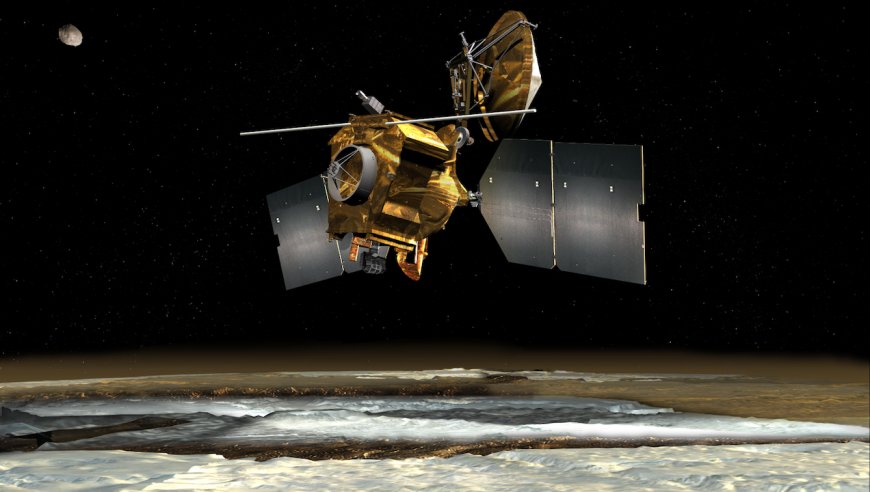NASA's Mars Reconnaissance Orbiter Expands Capabilities with New Rolling Maneuvers
After nearly 20 years in space, NASA's Mars Reconnaissance Orbiter is now performing large spacecraft rolls to enhance its search for water and other discoveries on the Red Planet. Engineers have successfully implemented a new maneuver that allows the orbiter to look deeper underground, opening up new possibilities for scientific exploration.

The Mars Reconnaissance Orbiter, operated by NASA, is testing new spacecraft rolls to search for water on Mars. After nearly 20 years in space, the orbiter has learned new maneuvers to look deeper underground for liquid and frozen water. Engineers have enabled the probe to roll over, allowing it to explore new regions of the subsurface.
The new capability was detailed in a recent paper in the Planetary Science Journal, showcasing three large rolls performed between 2023 and 2024. These rolls enhance the orbiter's ability to study Mars' surface and potential landing sites.
The orbiter's unique design allows it to roll in different directions to point its instruments accurately. Each roll is planned meticulously in advance to ensure the safety of the spacecraft and optimize scientific observations.
One significant outcome of these new maneuvers is the improved performance of the Shallow Radar (SHARAD) instrument, which can now provide a clearer view of Mars' subsurface, helping scientists distinguish between different materials.
By implementing very large rolls, the orbiter has enhanced the radar signal strength, offering a more detailed picture of the Martian underground. These maneuvers have also benefited other instruments onboard, such as the Mars Climate Sounder, which studies Mars' atmosphere and weather patterns.
The Mars Reconnaissance Orbiter continues to play a crucial role in exploring Mars and gathering valuable data for future missions. The mission is managed by NASA's Jet Propulsion Laboratory and involves international collaboration to maximize scientific discoveries.
According to the source: astrobiology.com.
What's Your Reaction?
 Like
0
Like
0
 Dislike
0
Dislike
0
 Love
0
Love
0
 Funny
0
Funny
0
 Angry
0
Angry
0
 Sad
0
Sad
0
 Wow
0
Wow
0






















































































































































